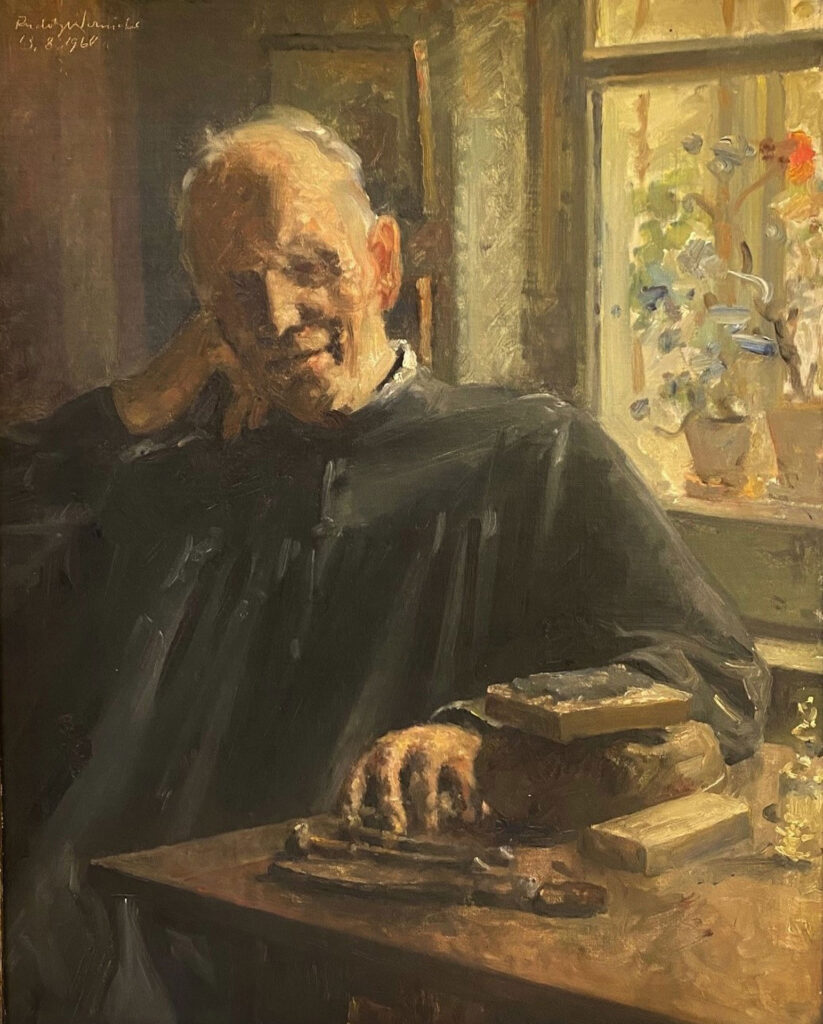
Max Kislinger was born in 1895 in Linz. He began drawing as a child. At the age of eleven he fell seriously ill, and developed a heart condition. As a result of his illness, he retreated into his own world. He was unable to attend art school due to his father’s early death. As soon as he had completed his high school examinations, he took a post with the Upper Austrian state government accounts department. Kislinger increasingly sought refuge from the job he disliked in his own private, artistic world, creating many designs for banknotes and bookplates. In 1929 he took part in the international bookplate exhibition in Los Angeles.
He was also a keen ceramicist and made a large number of whimsical figures. He was taught by Salzburg ceramicist Luise Spannring (1894-1982). In addition, Kislinger enjoyed making children’s toys. A visual chronicler, he documented many things for posterity and thus made a valuable contribution to folk culture in Upper Austria. He captured large numbers of farms in photographs and sketches, documenting rural buildings and what they stored. This documentation formed the basis for his watercolours, which were used as artworks in many books.
Shortly before his death, Kislinger donated a significant proportion of his estate to the Museum of Folklore. The portrait by Rudolf Wernicke shows Kislinger at the age of 65.
Max Kislinger died in 1983.
